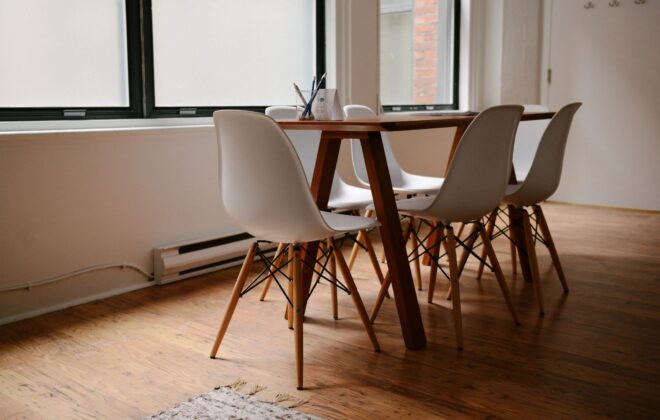Future-Proofing Your Zoom Room Design
As remote work becomes more prevalent, video conferencing has become an essential tool for businesses to communicate effectively with their clients and employees. Zoom, one of the most popular video conferencing platforms, has become the go-to option for many businesses. However, setting up a functional Zoom room is not enough to guarantee long-term success. In this article, we will explore how to future-proof your Zoom room design and ensure it remains effective and efficient for years to come.
Understanding the Importance of Future-Proofing Your Zoom Room Design
When setting up a Zoom room, it is crucial to think about the long-term. You don’t want to create a space that will quickly become outdated or inefficient, requiring frequent updates or redesigns. Future-proofing your Zoom room design means creating a space that can adapt to changes and stay relevant for years to come. By doing so, you can save time, money, and resources in the long run.
How Technology Affects Your Zoom Room Design
The technology used in your Zoom room design is essential to future-proofing the space. When choosing technology, it is important to consider the following factors:
Compatibility
Make sure the technology you choose is compatible with other equipment, software, and devices. This will help you avoid compatibility issues down the line.
Scalability
Consider the scalability of the technology you choose. As your business grows, your Zoom room may need to accommodate more people or support more features. Make sure the technology you choose can scale with your needs.
Upgradability
Technology changes rapidly, so it’s important to choose equipment that can be upgraded easily. This will help your Zoom room stay current and relevant as new features and technologies become available.
Designing a Flexible and Adaptable Zoom Room
Designing a flexible and adaptable Zoom room is essential to future-proofing the space. A flexible and adaptable design will allow your Zoom room to evolve and change as your needs change. Consider the following factors when designing your Zoom room:
Space Planning
Plan your Zoom room space carefully to ensure it is functional and efficient. Consider the size of the room, the number of people it needs to accommodate, and the equipment you need to install.
Furniture and Equipment
Choose furniture and equipment that is versatile and can be easily reconfigured. This will allow you to adapt your Zoom room to different situations and needs.
Lighting and Acoustics
Proper lighting and acoustics are crucial to creating a functional Zoom room. Consider installing soundproofing materials, acoustic panels, and lighting that can be adjusted based on the needs of the room.
Maintenance and Upkeep
Proper maintenance and upkeep are essential to ensuring the longevity and effectiveness of your Zoom room design. Consider the following factors:
Cleaning and Sanitization
Make sure to clean and sanitize your Zoom room regularly. This will ensure the safety of all users and help prevent the spread of germs and bacteria.
Equipment Upkeep
Regularly check and maintain your Zoom room equipment to ensure it is functioning properly. This will help prevent costly repairs and downtime.
Updating Technology
Stay up to date with the latest technology and software updates to ensure your Zoom room remains relevant and functional.
Conclusion
In conclusion, future-proofing your Zoom room design is essential to ensuring long-term success. By understanding the importance of technology, designing a flexible and adaptable space, and maintaining and updating your equipment, you can create a Zoom room that remains functional and efficient for years to come.
Recent Posts
- The AIoT Advantage: Harnessing the Convergence of Artificial Intelligence and the Internet of Things
- Quack AI Governance in the Age of Algorithmic Hype
- NVIDIA Corporation: A Strategic Analysis for Business Executives Navigating the AI Ecosystem
- Building and Optimizing an AI Center of Excellence: A Comprehensive Guide for Business Leaders
- The Agent Communication Protocol (ACP) and Interoperable AI Systems
Archives
- August 2025
- July 2025
- June 2025
- May 2025
- April 2025
- March 2025
- February 2025
- January 2025
- December 2024
- November 2024
- October 2024
- September 2024
- August 2024
- July 2024
- June 2024
- May 2024
- April 2024
- March 2024
- February 2024
- January 2024
- December 2023
- November 2023
- October 2023
- September 2023
- August 2023
- July 2023
- June 2023
- May 2023
- April 2023
- March 2023
- February 2023
- January 2023
- December 2022
- November 2022
- October 2022
- September 2022
- August 2022
- July 2022
- June 2022
- May 2022
- April 2022
- March 2022
- February 2022
- January 2022
- December 2021
- November 2021
- October 2021
- September 2021
- August 2021
- July 2021
- June 2021
- May 2021
- April 2021
- March 2021
- December 2020
- September 2020
- August 2020
- July 2020
- June 2020
Categories
- All (19)
- Satellite (1)
- Artificial Intelligence (6)
- Travel (1)
- Sports (1)
- Music (1)
- News (273)
- Design (3)
- Clients (12)
- Uncategorized (1)
- Tips & tricks (25)
- Inspiration (9)
- Client story (1)
- Unified Communications (196)
- Wide Area Network (308)
- Cloud SaaS (60)
- Security Services (71)




